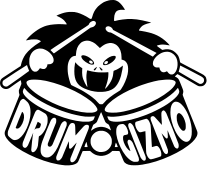
This shows you the differences between two versions of the page.
| Both sides previous revisionPrevious revisionNext revision | Previous revision | ||
| dev:dg_code_style_guide [2017/09/13 08:42] – [Indentation] deva | dev:dg_code_style_guide [2017/09/13 09:04] (current) – [DrumGizmo Code Styleguide] deva | ||
|---|---|---|---|
| Line 3: | Line 3: | ||
| | **//Code is written once by one person but read many times by many people.//** | | | **//Code is written once by one person but read many times by many people.//** | | ||
| - | What this essentially boils down to is; don't make syntactic short-cuts that makes it easier to write the code if it makes it harder to read the the code. | + | What this essentially boils down to is; don't make syntactic short-cuts that makes it easier to write the code if it makes it harder to read the code. |
| Always write comments to logical blocks in the code that explains for example what a for loop does or how a couple of function calls interact. | Always write comments to logical blocks in the code that explains for example what a for loop does or how a couple of function calls interact. | ||
| Line 15: | Line 15: | ||
| =====Curly Braces===== | =====Curly Braces===== | ||
| Use [[https:// | Use [[https:// | ||
| - | This basically boils down to 'curly braces always on a new line' | + | This basically boils down to 'curly braces always on a new line': |
| <code c++> | <code c++> | ||
| namespace Foo | namespace Foo | ||
| Line 133: | Line 133: | ||
| < | < | ||
| - | --->// Tab size: 4 ->// Tab size: 2 | + | --->// Tab size: 4 |
| - | ---> | + | ---> |
| - | ---> | + | ---> |
| - | ---> | + | ---> |
| - | ---> | + | ---> |
| - | ---> | + | ---> |
| </ | </ | ||
| Line 215: | Line 215: | ||
| The following naming schemes apply:\\ | The following naming schemes apply:\\ | ||
| - | // | + | // |
| <code c++> | <code c++> | ||
| class UpperCaseCamelCase | class UpperCaseCamelCase | ||
| Line 222: | Line 222: | ||
| </ | </ | ||
| - | // | + | // |
| <code c++> | <code c++> | ||
| void lowerCaseCamelCase() | void lowerCaseCamelCase() | ||
| </ | </ | ||
| - | // | + | // |
| <code c++> | <code c++> | ||
| int lower_case_snake_case = 42; | int lower_case_snake_case = 42; | ||
| Line 234: | Line 234: | ||
| // | // | ||
| <code c++> | <code c++> | ||
| - | # | + | # |
| </ | </ | ||
| Line 263: | Line 263: | ||
| //! This is a method. | //! This is a method. | ||
| //! \param foo The foo argument is an integer. | //! \param foo The foo argument is an integer. | ||
| - | //! \param bar The bar argument is a boolan. | + | //! \param bar The bar argument is a boolean. |
| //! \return This method returns a float. | //! \return This method returns a float. | ||
| float method(int foo, bool bar); | float method(int foo, bool bar); | ||